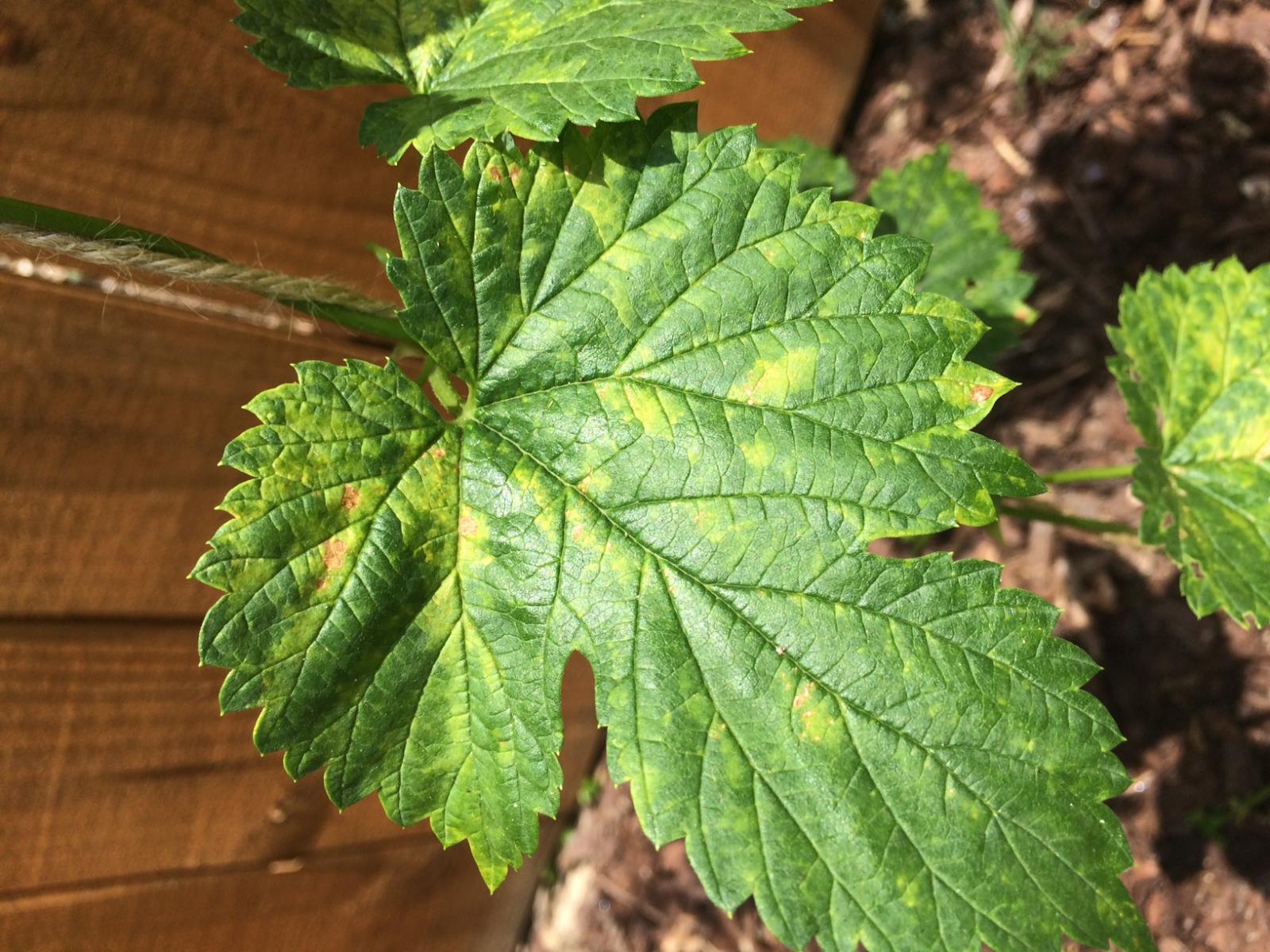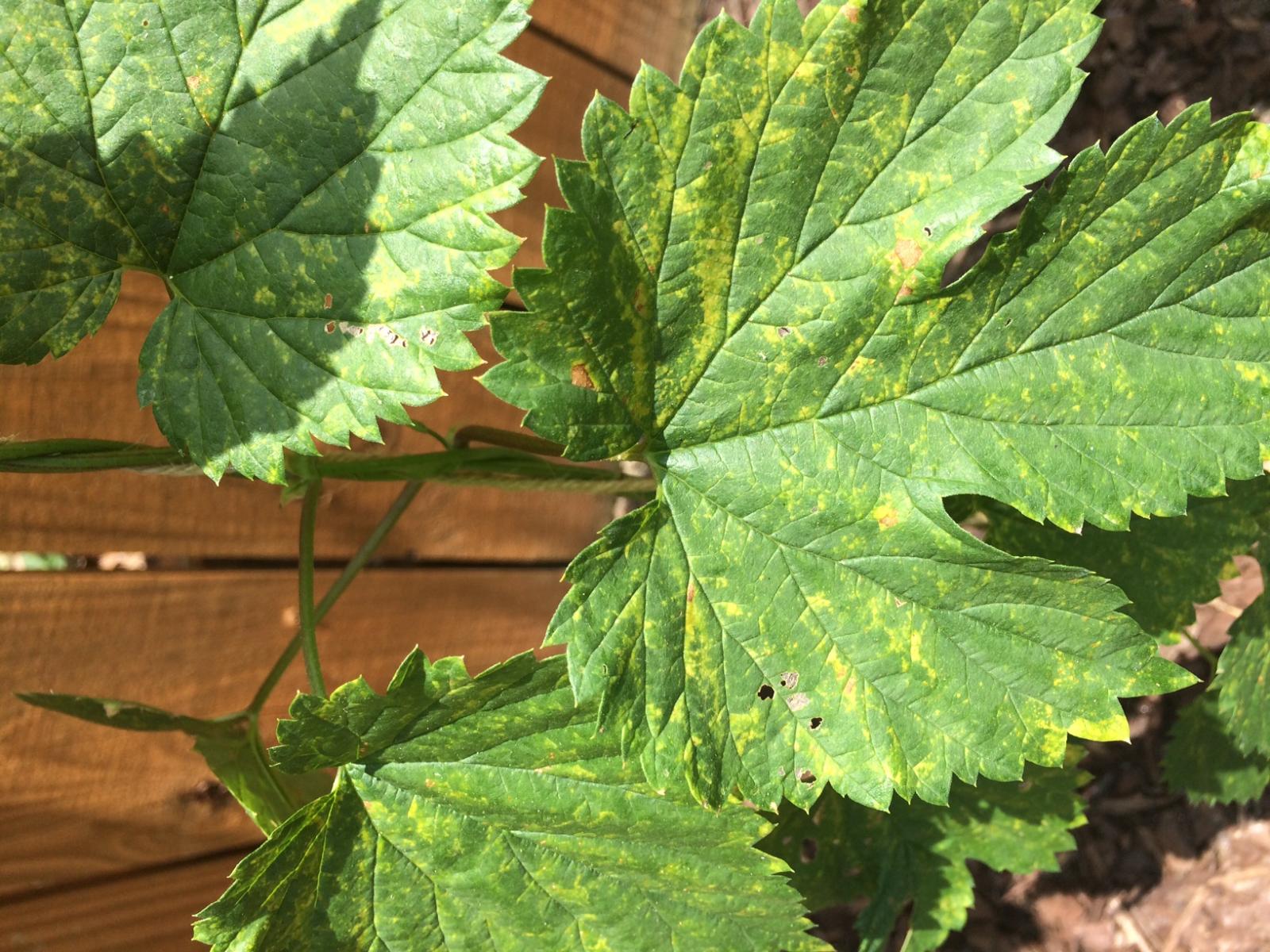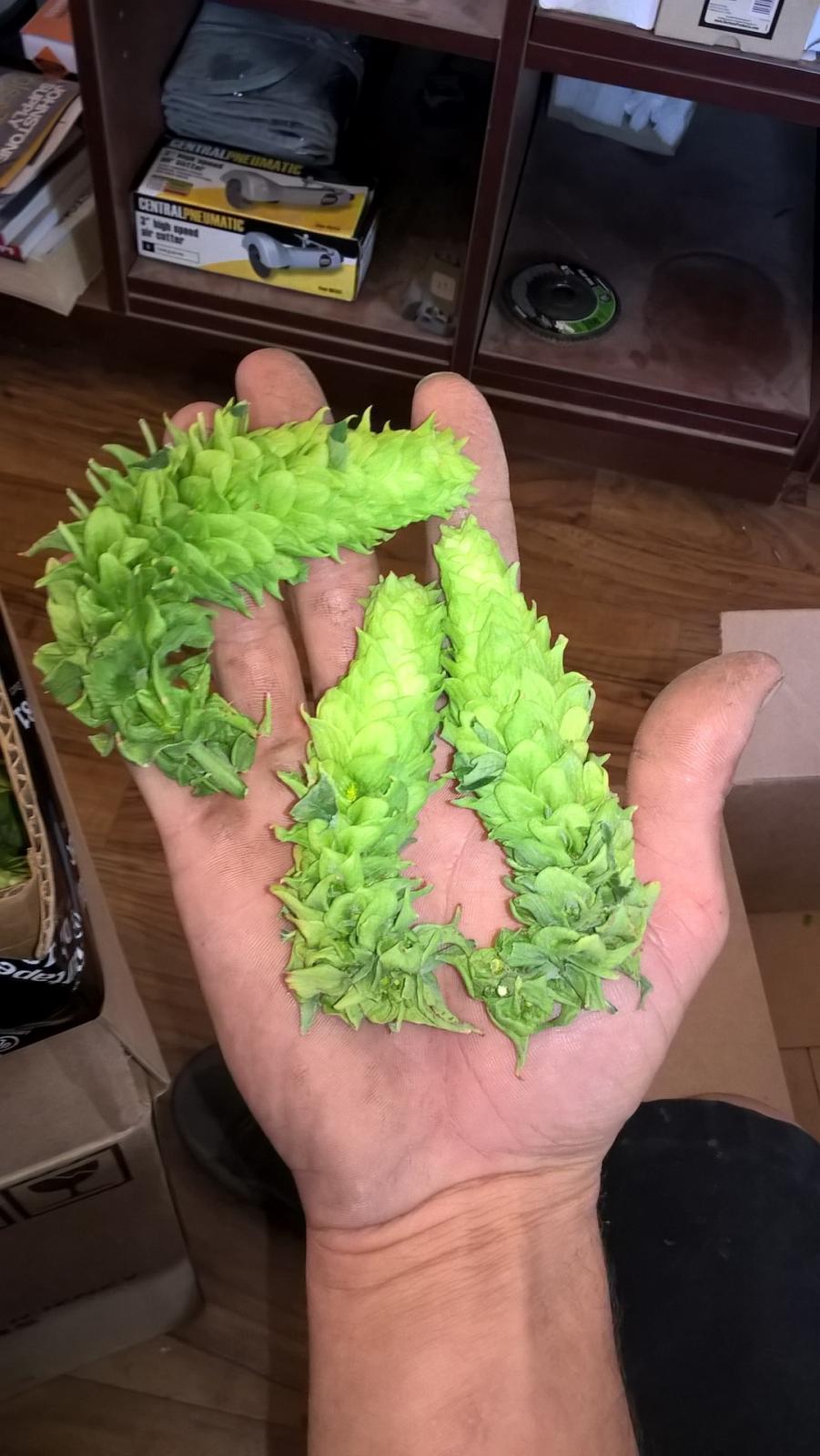The10mmKid
Well-Known Member
I was just trimming around the bed and I accidentally cut not just one but two of my cascade bines. I'm devastated......

I was just trimming around the bed and I accidentally cut not just one but two of my cascade bines. I'm devastated......
I pulled a small green Caterpillar out of one of my cones this weekend. It had made a leaf stick to the cone with it's cocoon and when I pealed the leaf back the little bugger was wiggling all over at me. Needless to say he took a flight.



Looking for some direction. My hops have a blochey, spotted appearance and some have developed holes. I thought it might have been an insect so i treated with neem oil. I have not seen any bugs on them except box elder bugs were on the fence nearby but i dont think they eat hops. I am now thinking that they were over watered as my soil is not the best draining and i did not realize until somewhat recently that the soil was very moist and not drying out between watering. Any insight is appreciated as i am just guessing.
















HarborTown,
You are opening a whole can of caterpillers with the use of Timbor on actively growing hop plants. Low relative mammalian toxicity, yes. Labelled for use around plants, no. Effective as a wood preservative, yes. The same active ingredient used as a "common" micro-nutrient fertilizer, no, not really. Boron an important element in plant growth, yes. Very narrow (parts per million) range between boron benefits and boron toxicity to the plant, YES. If you must treat the wood, I'd suggest waiting until this fall, when the hops go dormant. In the meantime, I'd get a soil test to determine your soil nutrient levels and then contact the local county Ag. extension agency to get their recommendations on wood treatments and soil/plant toxicity in your area. Just like pH in mashing, soil pH plays a critical role in plant health.
Can we get a picture of the underside of a leaf or two?
Looking for some direction. My hops have a blochey, spotted appearance and some have developed holes. I thought it might have been an insect so i treated with neem oil. I have not seen any bugs on them except box elder bugs were on the fence nearby but i dont think they eat hops. I am now thinking that they were over watered as my soil is not the best draining and i did not realize until somewhat recently that the soil was very moist and not drying out between watering. Any insight is appreciated as i am just guessing.
Looks like maybe an Iron Deficiency search "epsom salt and molasses" the magnesium will help in the absorbsion of Iron
Is it ok to double-train a string? I have a chinook hop where the top got broken off, so its made big side-arms. Should I run a second/third string for both side arms or is it ok to let them double-train up the same string?
Trying to look on my phone for a pic of the sidearms, but not finding one.
I have one main bine for this Chinook plant, the top of the bine broke off when I replanted it from the pot. At the point where the bine broke off it has gotten two sidearms (about 3" each). Can I double-train them on one string or should I make a string for each one?
When I get a chance after work, I'll get a pic up.



The bine you see behind the trellis is cascade. Which just gave me .5oz more dried cones yesterday!!!
View attachment 359664
New burrs keep popping up. Harvesting the parts on the trellis is kind of a PITA already, hopefully will get easier as more are along the line
View attachment 359665
Are you sure they are ready? I've had hundreds (maybe a thousand) cones on my Cascade for weeks (maybe months) and loads of new flowers appearing every day, and they are not ready yet. I checked them today by pulling back some of the layers on a few of the biggest cones and am not seeing much if any of the yellow lupulin resin.
Did you dry the cones, or did they just seem dry when you picked them? Picking them yesterday and already knowing you have .5 ozs dried cones is pretty quick. I may be wrong, but I suspect you are thinking the cones are already dry when you pick them. You don't get dried cones straight off the bine, although they may seem papery, they still contain a lot of water. After picking the cones you then need to dry them out (unless using them immediately). Typically, the dry weight will be roughly 20% of the 'as-picked' weight. So if the picked weith is 0.5 ozs, the dry weight will be approx, 0.1 ozs.
It does depend on the plant and size of the cones, but there are approximately 210 cones in 1 dry ounce of hops. To get .5 ozs dry, you would need to have picked somewhere in the region of 80 to 140 fresh cones.
Generally, hops are not ready for picking until late August or September in most places.


